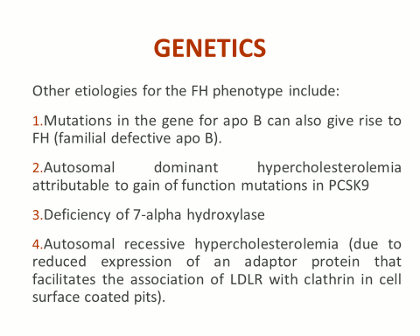Toth - Figure 8 - Genetic etiologies Text
Other than abnormalities in LDL receptor structure and function, other etiologies for a defective FH phenotype include:
- Mutations in the gene for ApoB100, referred to as familial defective apoB; the most common mutation giving rise to a loss of functionality in apoB occurs from a substitution mutation at amino acid position 3500, resulting in a dramatic reduction of the LDL receptor affinity for apoB, thus compromising the ability of an LDL particle to bind to the receptor and its cholesterol taken up into the hepatocyte cytosol.
- Autosomal dominant hypercholesterolemia, which is attributable to a gain of function mutation in the gene for PCSK9 (proprotein convertase subtilisin-like lexin type 9), a protein that regulates the half-life of expression of the LDL receptor. If there is a gain-of-function mutation in the gene, this accelerates the entry of the LDL receptor toward the endosomal compartment, where the LDL receptor is destroyed; on the other hand, loss-of-function mutations in PCSK9 can be associated with very dramatic reductions in LDL cholesterol; patients with loss-of-function mutations experience quite significant reductions in lifetime risk for CAD and in the case of homozygous mutations, patients may have lifelong LDL cholesterol levels <20 mg/dL and remain remarkably resistant to development of atherosclerotic disease.
- Deficiency of 7-alpha hydroxylase; the enzyme 7-alpha hydroxylase catalyzes the rate-limiting step for the conversion of cholesterol into bile acids; in the case of genetic 7-alpha hydroxylase deficiency, the intracellular concentration of LDL is very high and this leads to a reduction in the expression of LDL receptors on the hepatocyte surface and an impaired capacity to clear systemic LDL cholesterol, resulting in marked elevations in LDL cholesterol and increased risk for premature CAD.
- Autosomal recessive hypercholesterolemia, a very important condition that is due to reduced expression of an adaptor protein that facilitates the association of the LDL receptor with clathrin in cell surface coated pits.
